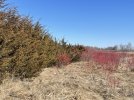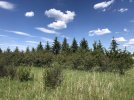It's the Federal Government! Some of the reasoning is sound, some is a stretch. The whole idea is to take highly erodible crop land out of production. So, there's the issue of how to define highly erodible land. That's rather much a NRCS determination. Some states have water erosion as a high priority. Others have both water and wind. Here in Virginia wind is not a factor - by definition. So, no CP5s. There are 21-states with acreage enrolled in CP5. Five states, NE, SD, MN, IA, & ND account for 85% of all the enrolled acreage in the United States. Wisconsin has only 106 acres.
Where I've seen it most used (in Nebraska) is in the corners of sections (?) where center pivot irrigation is in place.
By the way, these are 2020 numbers. NRCS determines if enrollment addresses a conservation concern, make of it what you will.
After all of that, the land being considered needs to have cropping history. That is, acreage that has been reported planted to FSA in 4 of 6 years between 2008 & 2013 (go figure that range).
If you meet that requirement you need to meet other farm programs eligibility like owning and/or controlling the land for the duration of the contract (and several others). You would be responsible for any required maintenance out of your pocket and should you violate any of the contract terms you may be required to repay the establish incentive and the rental payments plus interest.
If you want to dig deep go here for acreage by practice by state and county:
https://www.fsa.usda.gov/programs-a...conservation-reserve-program-statistics/index
Look at the bottom of the page.


